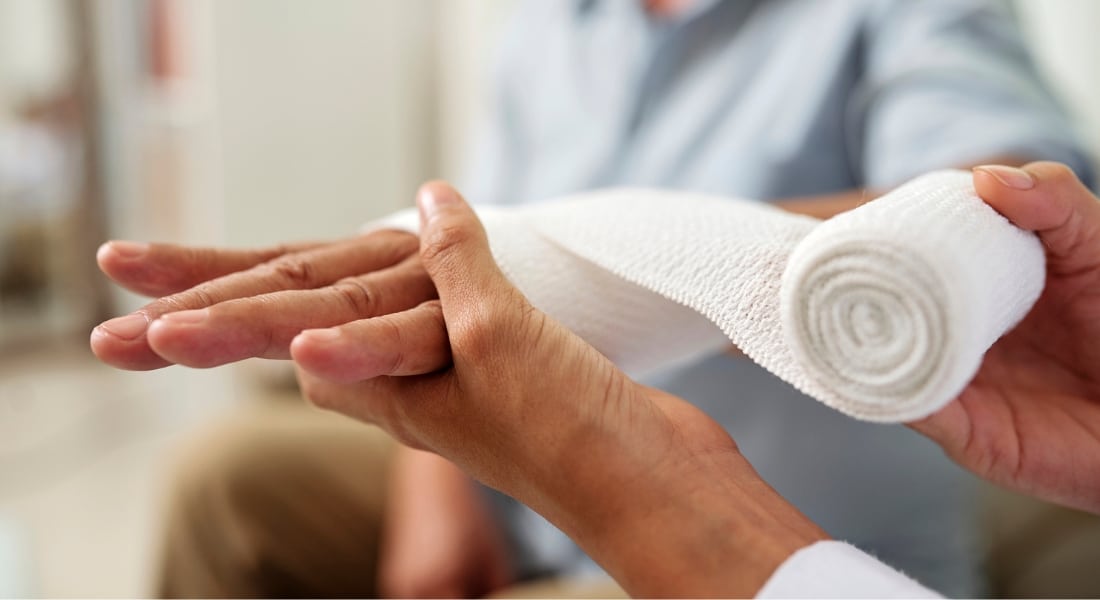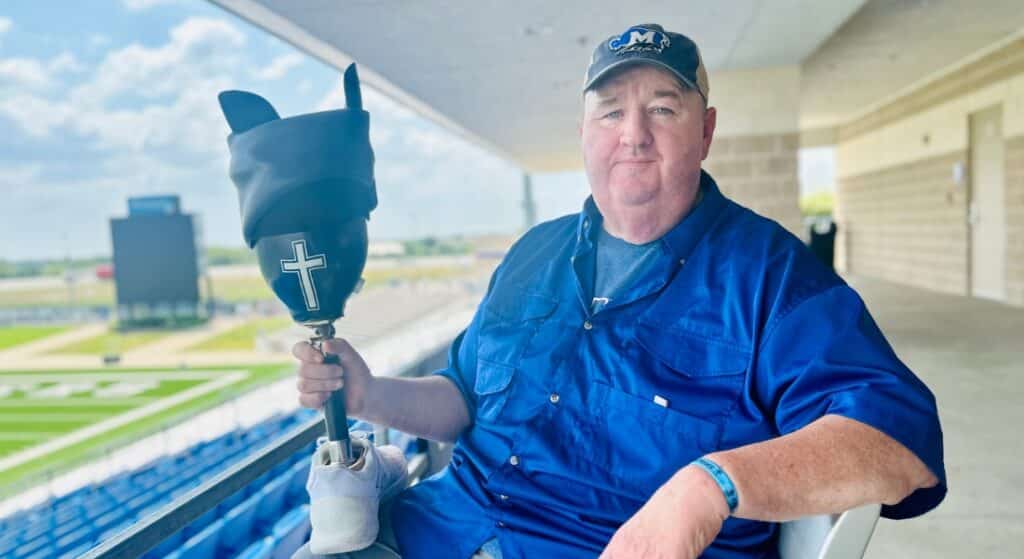For most people, minor scratches and scrapes heal on their own, but for older adults and others with limited mobility or autoimmune diseases, minor injuries can become major wounds.
“As we age, our mobility lessens and that leads to different pressure areas that weren’t there before,” says Jenna Wishnew, MD, general surgeon on the medical staff at Methodist Richardson Medical Center.
That’s because seniors produce less of the protein collagen, and what their bodies do produce breaks down faster, leading to other signs of aging like joint pain and wrinkles.
“It’s like the framework of a house,” Dr. Wishnew says. “If we don’t have lots of strong collagen, then our wounds don’t heal as well.”
Dr. Wishnew, who helps lead Methodist Richardson’s Wound Care and Hyperbaric Center, shared her expertise with a group from Methodist Generations, explaining how dangerous seemingly minor cuts can be for older adults.
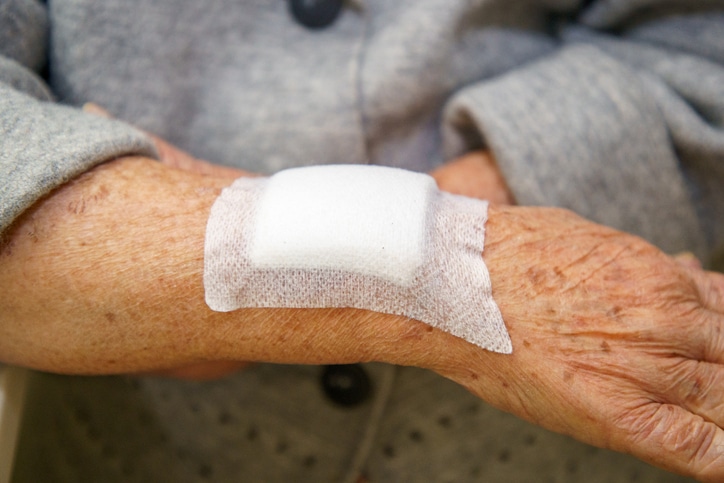
Even the smallest cuts can cause a serious infection if they allow bacteria into the body.
FROM CUT TO WOUND
The easiest way for cuts to open and invite bacteria into the body is through dry, cracked skin.
“Even the slightest break in the skin can let fluid out and allow bacteria in,” Dr. Wishnew says. “It could be the smallest little thing that can lead to something bigger.”
These symptoms typically occur in older adults, especially those with chronic diseases like diabetes, heart conditions, and arterial or vein insufficiency, where blood pools in the lower extremities.
Dr. Wishnew encourages anyone living with these diseases to keep close watch for wounds they may not otherwise feel because of peripheral neuropathy, which can cause numbness in the hands and feet.
“Different neurological autoimmune disorders reduce feelings in the feet,” she says. “The aging population is at the greatest risk for that trauma, but also the progression of those wounds when we don’t know they’re there.”
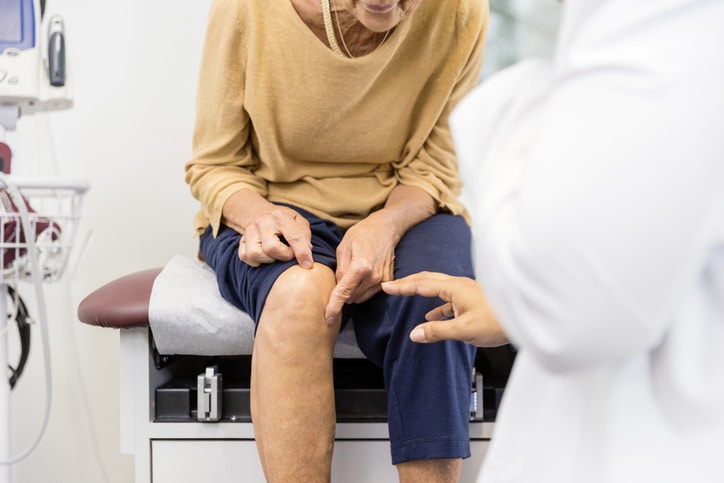
Poor circulation in the legs can cause varicose veins and, ultimately, more serious ulcers.
TYPES OF WOUNDS
Knowing what to look for and where is the first step. Many of the most harmful wounds can be hidden from sight, whether it’s bedsores on your back or ulcers on the soles of your feet.
Foot ulcers, commonly found among diabetics, are caused by poor circulation and complicated by neuropathy. While they vary in size and appearance, these wounds are usually pink, red, brown, or black.
“Researchers found that about 25% of diabetics have foot ulcers, with 15% of those resulting in amputations,” Dr. Wishnew says. “Prevention is key, especially in diabetics.”
Physicians advise immobile seniors to watch out for bedsores, which resemble red, blue, or purple patches. Also known as pressure ulcers, these wounds form when a patient has prolonged pressure on their skin, whether from being confined to a bed or wheelchair. If a bedsore becomes infected, the wound can grow deeper, causing serious complications.
Venous stasis ulcers are another common wound among seniors. These ulcers are usually a result of varicose veins that cause poor circulation in the legs. They look like a shallow open sore that can be irregular in shape. Skin around the ulcer may appear discolored, hardened, or shiny.
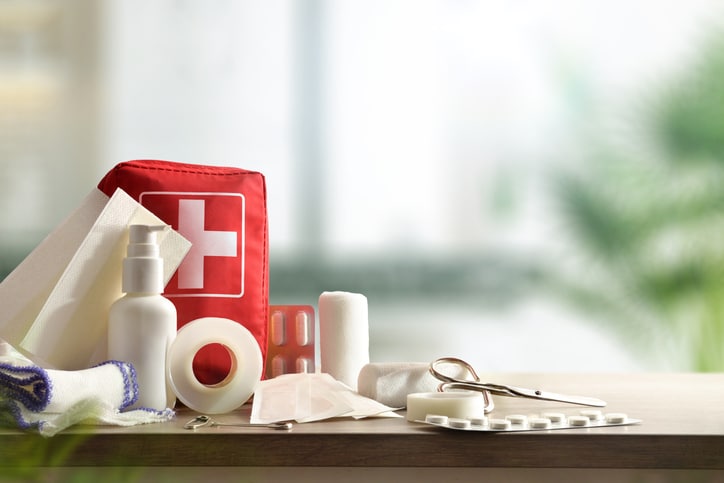
If your first-aid kit contains hydrogen peroxide, you might want to think twice about using it, doctors say.
TREATING THE WOUND
When caring for a wound, physicians advise against submerging it in water. When getting a pedicure, Dr. Wishnew recommends consulting with a podiatrist to prevent an infection.
“I think it’s much better to go to a podiatrist than a manicurist,” she says. ”You want someone who knows and can recognize something that’s abnormal.”
Medical providers advise against using hydrogen peroxide to treat wounds. The antiseptic kills everything: the bacteria and the cells that help the healing process.
Using antibiotic ointment is also discouraged, unless the wound is infected. In large amounts, ointments like Neosporin can also prevent proper healing from occurring and potentially trigger an allergic reaction.
“Use a Band-Aid, and change the dressing daily,” Dr. Wishnew says. “Clean it with soap and water, but also call the doctor if you notice there’s redness, drainage, or odor. Those are indications of infection.”

Don’t hesitate to seek medical help to prevent a minor cut from becoming a major wound.
WHEN TO SEE A DOCTOR
When a wound lingers for two weeks with little to no improvement, it’s important to seek medical care. If the wound continues to worsen, it can lead to a vicious cycle that causes future complications.
“A doctor can help bring awareness to the things that cause the wounds and worsen them,” Dr. Wishnew says. “If we can help prevent these complications from happening then there’s a better chance at boosting the average person’s mortality.”

